The RIPE NCC membership has raised concerns regarding members setting up additional Local Internet Registry (LIR) accounts. The RIPE NCC Executive Board is now asking the RIPE NCC membership to discuss this. The article below provides some background information, data and statistics for the discussion.
Introduction
Until now, RIPE NCC members have been able to acquire and open additional LIR accounts and members have done so for a variety of purposes.
On 18 November 2015, the RIPE NCC Executive Board passed a resolution to temporarily restrict the ability of RIPE NCC members to open additional LIR accounts. The Board resolution followed the RIPE NCC General Meeting held on 18 November 2015, at which RIPE NCC members raised concerns regarding the growing number of organisations opening additional accounts and subsequently obtaining multiple /22s from the last /8, a practice perceived to conflict with the intention of the last /8 policy.
RIPE NCC members are now asked to discuss whether the practice of opening additional LIR accounts should be prevented and, if so, what actions the RIPE NCC should take in order to prevent this.
In order to facilitate the decision-making process, this document aims to provide background on the relevant policies and discussions as well as data from the RIPE NCC on the situation as it has developed over time.
Preparing to reach the last /8
Back in 2010, several policy changes were proposed to address the approaching run-out of IPv4 address space. At the conclusion of the Policy Development Process, policy proposal 2010-02, which outlined how the RIPE NCC should handle the last /8, reached consensus within the RIPE community. Broadly speaking, this policy stated that all LIRs are allowed to request a single /22 from the last /8. The intent of this change was two-fold:
- To prolong the life of the last /8 by giving as many newcomers as possible the opportunity to run an IPv4 network during the transition to IPv6; and
- To prevent one or a few organisations from consuming the entire block with needs-based requests.
It was noted by the proposer and in the related RIPE NCC impact analysis that some RIPE NCC members might open additional LIR accounts in an effort to obtain more than one /22 and that this would be difficult to control. The last /8 policy came into effect in September 2012.
Towards the end of 2014, the RIPE NCC reported that the number of RIPE NCC members opening additional LIR accounts and subsequently receiving multiple /22s had started to increase. This began to receive more attention within the RIPE community and further data was collected and reported in May 2015 at RIPE 70. Updated data regarding the trends in membership and allocations from the last /8 follows below.
Impact on membership
Figure 1 shows the significant change in the volume of RIPE NCC members opening additional LIR accounts during the past two years.
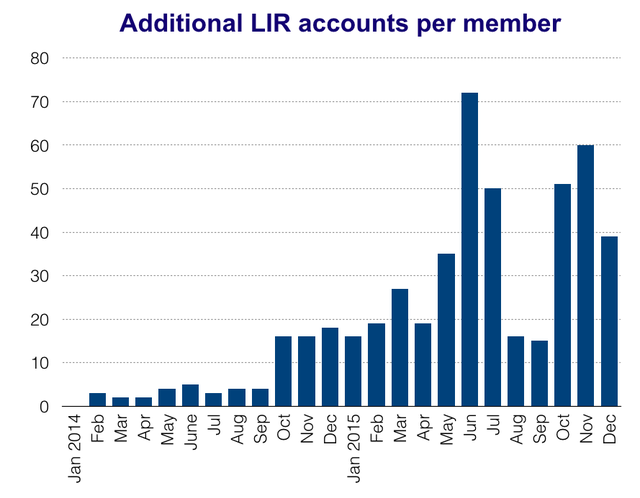
Figure 1: Monthly count of number of additional LIR accounts opened
Figure 2 illustrates the increase over the last three years in the proportion of additional LIR accounts being opened. By 2015 this increase meant that 17% of the LIR accounts opened were registered to existing RIPE NCC members that already held at least one other LIR account.
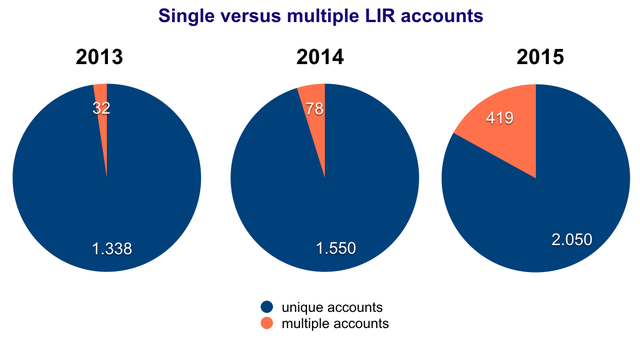
Figure 2: Number of LIR accounts opened by RIPE NCC members that already held existing accounts (orange) compared to those opening their first account (blue)
Impact on the last /8
Figure 3 shows the cumulative number of allocations from the last /8 that members have received directly from the RIPE NCC. This excludes allocations received following a transfer or merger (see Figure 6 for numbers of transfers and mergers).

Figure 3: Number of members and the number of /22s received from the last /8 (data correct as of 25 January 2016)
Following the implementation of 2010-02 in September 2012, the RIPE NCC has allocated 8,609 /22s from the last /8. Figure 3 also illustrates that 123 members opened additional LIR accounts and received 609 of these /22s. This equates to around 1% of members receiving 7% of the /22s. Note that the total number of members (13,230) in Figure 3 exceeds the number of active LIR accounts (12,994 on 25 January 2016). This is because some of the members have since closed their accounts.
In October 2015, the RIPE NCC published an article examining allocation rates and possible IPv4 depletion timelines. In Figure 4 you can see the current status of the allocation rate from the last /8 (185/8).
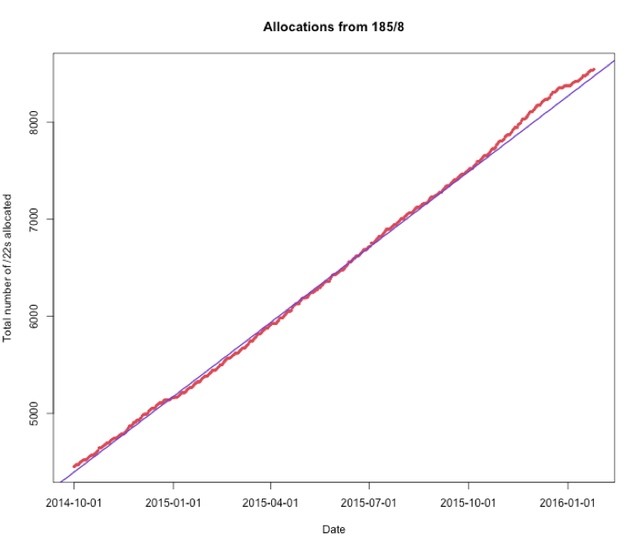
Figure 4: Total allocations from 185/8 over time.
The blue line represents the linear fit for the period 1 October 2014 - 1 October 2015
Figure 5 shows the current number of IPv4 addresses in the RIPE NCC IPv4 Pool. At the time of writing (26 January 2015) there were 15.89 million IPv4 addresses (approximately 15,500 /22s) still available.

Figure 5: Number of IPv4 addresses left in the RIPE NCC IPv4 Pool in millions
Limiting financial incentives
Early in 2015 a new policy change, 2015-01, was proposed in order to limit the financial incentive of obtaining and transferring /22s from the last /8. This policy, implemented in July 2015, ensured that all allocations received by an LIR must be held within that LIR account for 24 months before a transfer would be possible. On 19 March 2015, the Board passed another resolution obliging RIPE NCC members who close an LIR account within 12 months of opening it to pay the full annual fee before commencement of a merger, transfer or closure for that account.
During the discussions of 2015-01, concerns were raised by the community not only regarding the practice of obtaining and transferring /22s quickly, but also regarding RIPE NCC members receiving and keeping multiple /22s by opening additional LIR accounts. This practice was perceived to conflict with the original intention of the last /8 policy.
Figure 6 illustrates the number of policy transfers and the number of transfers due to merger. It clearly shows the drop in transfers following the implementation of policy 2015-01 in July 2015. Also visible here is that almost three times as many mergers were completed in December 2015 compared to the end-of-year surge in December 2014.
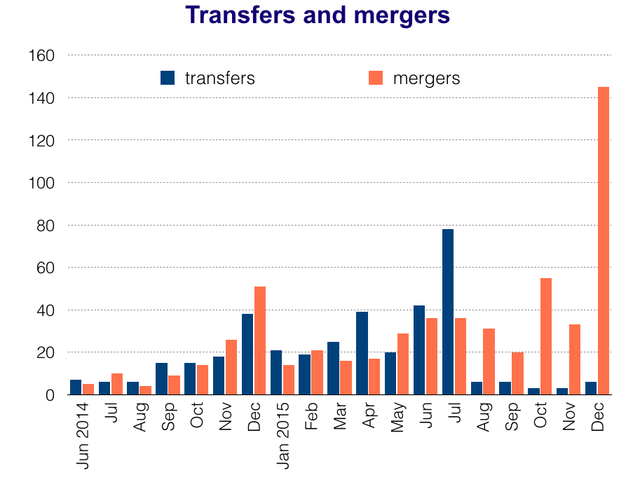
Figure 6: Number of prefixes from last /8 transferred (blue) and merged (orange) since June 2014
The RIPE community concluded that address policies could only address part of the problem and it was recommended that the RIPE NCC membership raise the question of additional LIR accounts with the RIPE NCC Executive Board. These concerns were officially raised to the Board on 18 November 2015 and resulted in the resolution to temporarily restrict the ability of RIPE NCC members to open additional LIR accounts.
Next steps
The Board asks the RIPE NCC membership to provide their opinions and discuss the following points:
- Is the activity of RIPE NCC members opening additional LIR accounts a problem that must be prevented?
- If this activity is a problem that must be prevented, what action should the RIPE NCC take to attempt its prevention?
Members are encouraged to discuss this on the RIPE NCC Membership Discussion List. The Board will monitor the discussion and review it at the next Executive Board meeting on 31 March 2016. Depending on the outcome of that meeting, the Board may propose a resolution for members to vote on at the RIPE NCC General Meeting in May 2016.

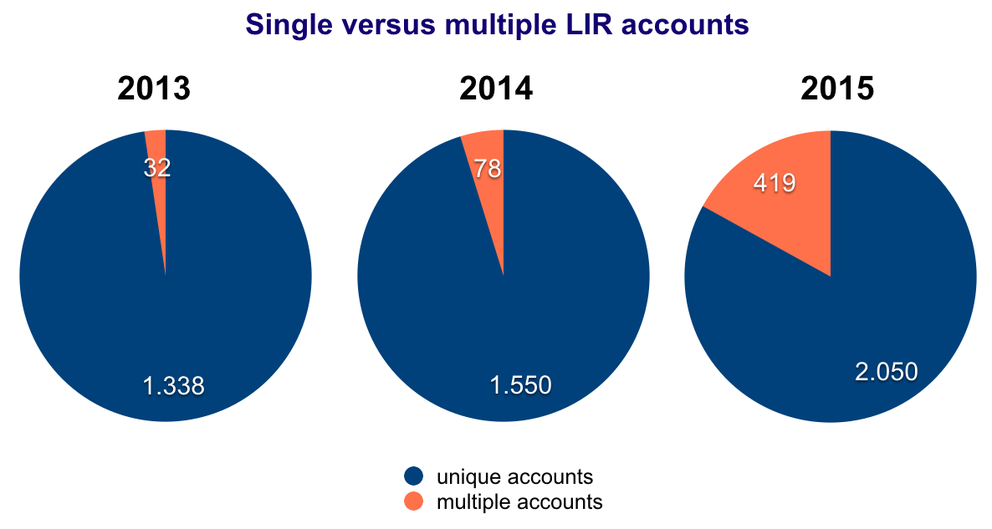

Comments 0
The comments section is closed for articles published more than a year ago. If you'd like to inform us of any issues, please contact us.